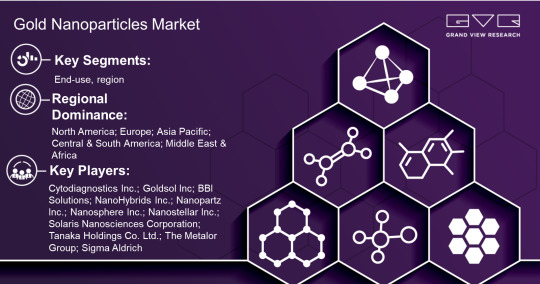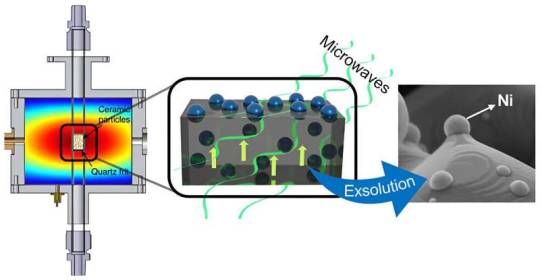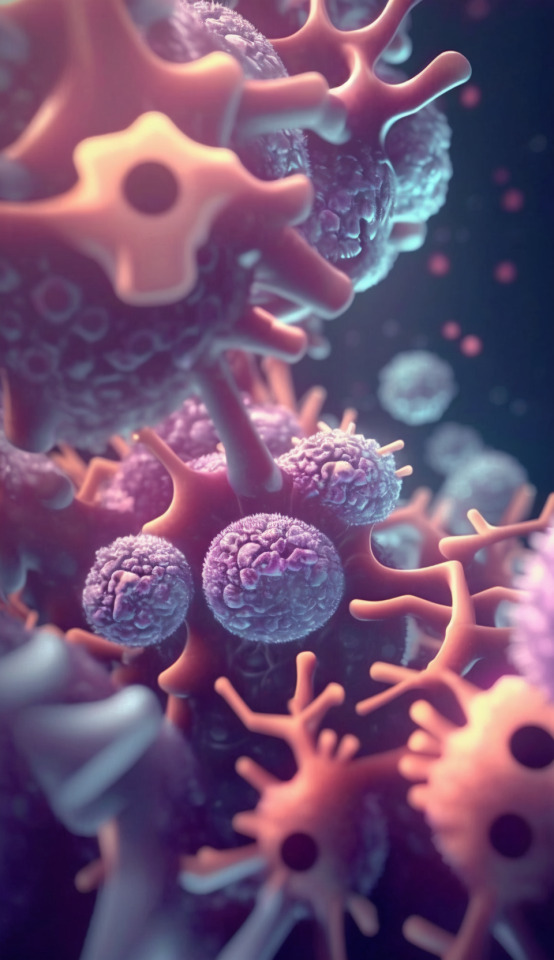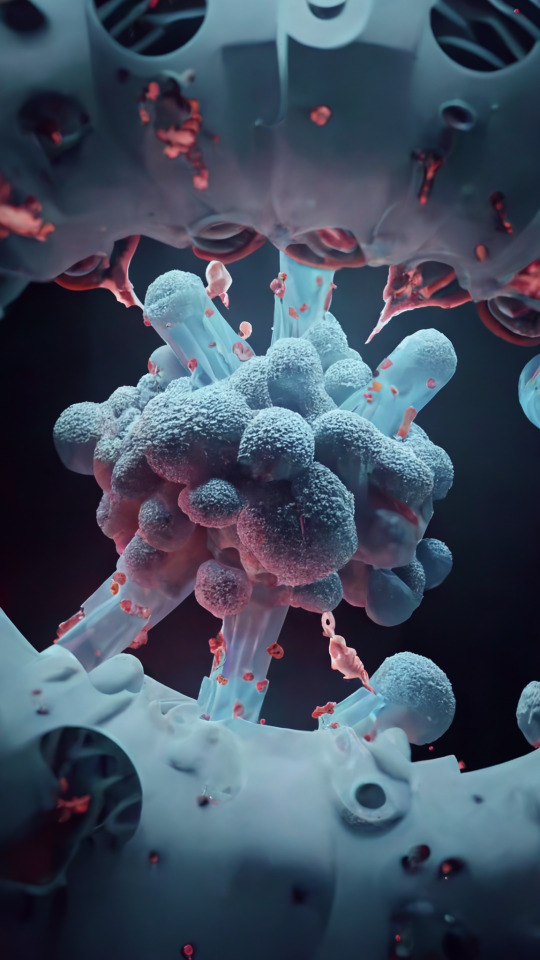#nanoparticles industry
Text
Unveiling the Dynamics of the Metal Nanoparticles Market

In the realm of nanotechnology, metal nanoparticles have emerged as integral components with applications spanning various industries. From healthcare to electronics, these microscopic wonders are shaping the future of technology. In this article, we'll explore the dynamics of the metal nanoparticles market, answering pertinent questions and shedding light on the trends, challenges, and key players in this dynamic landscape.
The global Metal Nanoparticles Market was valued at USD 2.4 billion in 2021 and is projected to reach USD 4.2 billion by 2026, growing at a cagr 11.5% from 2021 to 2026. Growing application areas of metal nanoparticles coupled with increasing demand for gold nanoparticles in the pharmaceutical & healthcare industry are major factors expected to drive the growth of the metal nanoparticles market globally. Also, the rapid growth of the healthcare sector is one of the other factors expected to drive the growth of the global market for metal nanoparticles.
The Most Used Metal Nanoparticles
1. Silver Nanoparticles:
Renowned for their exceptional antimicrobial properties, silver nanoparticles have found a significant foothold in healthcare, textiles, and electronics.
2. Gold Nanoparticles:
Valued for their stability and compatibility, gold nanoparticles play a pivotal role in drug delivery, imaging, and catalysis applications.
3. Iron Oxide Nanoparticles:
With magnetic properties, iron oxide nanoparticles are indispensable in biomedical applications, including imaging and targeted drug delivery.
Limitations of Metallic Nanoparticles
While the advantages of metal nanoparticles are vast, they are not immune to challenges:
1. Toxicity Concerns:
Certain metal nanoparticles may pose toxicity risks, prompting careful consideration of their impact on human health and the environment.
2. Stability Issues:
The stability of metal nanoparticles can be compromised under specific conditions, affecting their performance and versatility.
3. Cost Considerations:
The production of certain metal nanoparticles, particularly those involving precious metals, can be cost-intensive, influencing their widespread adoption.
Challenges and Trends in the Metal Nanoparticles Market
Trends
1. Integration in Healthcare:
Metal nanoparticles are increasingly integrated into medical applications, promising groundbreaking advancements in diagnostics, imaging, and drug delivery within the healthcare sector.
2. Sustainable Synthesis:
A growing trend in the market is the exploration of eco-friendly and sustainable methods for synthesizing metal nanoparticles, addressing environmental concerns.
Challenges
1. Regulatory Hurdles:
Navigating regulatory frameworks remains a significant challenge for the widespread adoption of metal nanoparticles in various industries.
2. Safety Concerns:
Addressing concerns related to the safety and potential environmental impact of metal nanoparticles is crucial for their sustained usage.
Download PDF Brochure :
Opportunity: Metal nanoparticles as emerging green catalysts
Green nanotechnology is defined as the technology applied for building clean technology by which one can reduce the potential risks of environment and also improve human health conditions. It is linked with the implementation of products of nanotechnology and its process of manufacturing. Green nanotechnology synthesizes new nanoproducts with improved properties in such a way that they can substitute some of the existing low-quality products. The main motive of developing new nanoproducts is to enhance sustainability and also to make them more environment friendly. In particular, nanoscale materials (e.g., metal nanoparticles) can be defined as those having characteristic length scale lying within the nanometric range, that is, in the range between one and several hundreds of nanometers. Within this length scale, the properties of matter are sufficiently different from individual atoms/molecules or from bulk materials.
Market Players
Major players operating in the global metal nanoparticles market include American Elements (US), Nanoshel LLC (US), Nanostructured & Amorphous Materials (US), EPRUI Nanoparticles & Microspheres (China), US Research Nanomaterials (US), Tanaka Holdings (Japan), Meliorum Technology (US), Nanocomposix (US), BBI Group (UK), Sigma-Aldrich (US), and Nanocs (US) among many others.
The metal nanoparticles market is marked by innovation, challenges, and a constant quest for improvement. As technology advances and our understanding deepens, these microscopic wonders continue to shape the future across industries, promising both opportunities and responsibilities. Stay tuned for more updates on this dynamic and ever-expanding field!
1 note
·
View note
Text
Gold Nanoparticles Market Focusing On The Basis Of End Use, Region And Forecast 2030: Grand View Research Inc.
San Francisco, 20 June 2023: The Report Gold Nanoparticles Market Size, Share & Trends Analysis Report By End-use (Medical & Dentistry, Electronics, Catalysis), By Region, And Segment Forecasts, 2023 – 2030
The global gold nanoparticles market size is expected to reach USD 15.65 billion by 2030, as per a new report by Grand View Research Inc. It is projected to register a CAGR of 22.3% over the…

View On WordPress
#Gold Nanoparticles Industry#Gold Nanoparticles Market#Gold Nanoparticles Market 2023#Gold Nanoparticles Market 2030#Gold Nanoparticles Market Revenue#Gold Nanoparticles Market Share#Gold Nanoparticles Market Size
0 notes
Link
The report "Metal Nanoparticles Market by metal (Platinum, Gold, Silver, Iron, Titanium, Copper, Nickel), End-use industry (Pharmaceutical & healthcare, Electrical & electronics, Catalyst, Personal care & cosmetics), and Region - Global Forecast to 2022 " The metal nanoparticles market size is estimated to grow from USD 12.35 Billion in 2017 to USD 25.26 Billion by 2022, at a CAGR of 15.4%.
#Metal Nanoparticles Manufacturers#metal nanoparticles#Metal Nanoparticles Market#Metal Nanoparticles Industry
0 notes
Text
Genetically Modified Bacteria Produce Energy From Wastewater

E. Coli is one of the most widely studied bacteria studied in academic research. Though most people probably associate it with food/water borne illness, most strains of E. Coli are completely harmless. They even occur naturally within your intestines. Now, scientists at EPFL have engineered a strain of E. Coli that can generate electricity.
The survival of bacteria depends on redox reactions. Bacteria use these reactions to interconvert chemicals in order to grow and metabolize. Since bacteria are an inexhaustible natural resource, many bacterial reactions have been industrially implemented, both for creating or consuming chemical substrates. For instance, you may have heard about researchers discovering bacteria that can break down and metabolize plastic, the benefits of which are obvious. Some of these bacterial reactions are anabolic, which means that they need to be provided external energy in order to carry it out, but others are catabolic, which means that the reactions actually create energy.
Some bacteria, such as Shewanella oneidensis, can create electricity as they metabolize. This could be useful to a number of green applications, such as bioelectricity generation from organic substrates, reductive extracellular synthesis of valuable products such as nanoparticles and polymers, degradation of pollutants for bioremediation, and bioelectronic sensing. However, electricity producing bacteria such as Shewanella oneidensis tend to be very specific. They need strict conditions in order to survive, and they only produce electricity in the presence of certain chemicals.
The method that Shewanella oneidensis uses to generate electricity is called extracellular electron transfer (EET). This means that the cell uses a pathway of proteins and iron compounds called hemes to transfer an electron out of the cell. Bacteria have an inner and outer cell membrane, so this pathway spans both of them, along with the periplasmic space between. In the past, scientists have tried to engineer hardier bacteria such as E. Coli with this electron-generating ability. It worked… a little bit. They were only able to create a partial EET pathway, so the amount of electricity generated was fairly small.
Now, the EPFL researchers have managed to create a full pathway and triple the amount of electricity that E. Coli can produce. "Instead of putting energy into the system to process organic waste, we are producing electricity while processing organic waste at the same time -- hitting two birds with one stone!" says Boghossian, a professor at EPFL. "We even tested our technology directly on wastewater that we collected from Les Brasseurs, a local brewery in Lausanne. The exotic electric microbes weren't even able to survive, whereas our bioengineered electric bacteria were able to flourish exponentially by feeding off this waste."
This development is still in the early stages, but it could have exciting implications both in wastewater processing and beyond.
"Our work is quite timely, as engineered bioelectric microbes are pushing the boundaries in more and more real-world applications" says Mouhib, the lead author of the manuscript. "We have set a new record compared to the previous state-of-the-art, which relied only on a partial pathway, and compared to the microbe that was used in one of the biggest papers recently published in the field. With all the current research efforts in the field, we are excited about the future of bioelectric bacteria, and can't wait for us and others to push this technology into new scales."
146 notes
·
View notes
Text

Scientists discover new method for generating metal nanoparticles to use as catalysts
A team of researchers from the ITACA Institute of the Universitat Politècnica de València (UPV) and the Research Institute of Chemical Technology, a joint center of the Spanish National Research Council (CSIC) and the UPV, has discovered a new method for the manufacture of metal nanocatalysts that is more sustainable and economical.
With great potential in the industrial sector, the method would contribute to the decarbonization of industry. The work has been published in the journal ACS Nano.
This new method is based on the exsolution process activated by microwave radiation. Exsolution is a method of generating metallic nanoparticles on the surface of ceramic materials. "At elevated temperatures and in a reducing atmosphere (usually hydrogen), metal atoms migrate from the structure of the material to its surface, forming metal nanoparticles anchored to the surface. This anchoring significantly increases the strength and stability of these nanoparticles, which positively impacts the efficiency of these catalysts," explains Beatriz García Baños, a researcher in the Microwave Area of the ITACA Institute at the UPV.
Read more.
#Materials Science#Science#Nanoparticles#Catalysts#Metals#Nanotechnology#Materials processing#Microwaves#Manufacturing#Nickel
22 notes
·
View notes
Text
To size up the impact South Korean superstars SHINee have had on music is a difficult task. With a panorama that spans both K-pop and the world’s stage, the band’s dominance has grown exponentially since their debut 15 years ago. With their latest album, it’s also clear that SHINee’s future could only get even brighter.
When someone goes around muttering, “Hard like a criminal, hard like the beat” under their breath for about two months straight, it’s bound to attract a few stares at the workplace. Especially when you yell, “We go HARD” when your colleagues enquire about your state of mind. But that’s SHINee’s effect for you. The lyrics from the title track of the legendary band’s eighth Korean language studio album, fittingly titled HARD, tend to imprint themselves on the listener’s temporal lobe. But this isn’t a new phenomenon for SHINee. Fifteen years since the band’s debut, it’s safe to say that they have created K-pop’s (and pop in general’s) most satisfying earworms and anthems, from Replay (2008) to Ring Ding Dong (2009), and Amigo (also 2008) to View (2015), to name a nanoparticle of songs off a daunting discography. ONEW, KEY, MINHO, TAEMIN – and the late beloved JONGHYUN – together form one of the finest, most well-rounded groups to emerge from South Korea’s competitive music industry, and their longevity speaks volumes about their talent and relevance. This includes solo projects, too – each of their individual offerings is a class apart.
So, how does one even begin to dismantle SHINee’s hypnotic hold on both their Korean and global devotees? To be honest, there is no need to divide them because once a ‘SHINee WORLD’ (the name given to the band’s beloved fanbase), always a SHINee WORLD regardless of age, gender or geographic distinction. With their vocal prowess, stage mastery, and dexterity of movement, they’ve filled stadiums worldwide through the course of a 15-year-long juggernaut. ONEW possesses one of the most iconic voices known to this oeuvre, with a dominant baritone and operatic tenor. KEY’s aura and presence is impossible to translate into words. MINHO’s a towering personality in terms of both talent and charisma. It’s also not hyperbole to state that TAEMIN is the king of movement – an unparalleled dancer, and a star. Together, they’re extraordinary. Solo, their personalities jump off the screen too. They’re each lovable matrixes of sass, humour, gravitas... clumsiness (the fans will attest to this). If one were to sum them up, ‘real’ would be the word to choose. Even though they’re revered in the industry, and active in all its different aspects – variety shows, musicals, performing on OSTs, solo projects, etc – they’re as humble as the day they started.
In this email interview, three of the band members dive into their music, providing perspective on the landscape they inhabit. ONEW, the leader of the band, is currently on hiatus for health issues. (However, he did send out a message to fans to reassure them of his rest and recovery and his imminent return.) One thing is for sure – it’s SHINee’s world, and we’re happy to be living in it.

You’ve always been completely ahead of the curve when it comes to genre, often blending several sonic elements in one album. In this album, for instance, you have wobbly drum and bass and soulful vocals on The Feeling, a really fresh take on the clear drum breaks of ’90s hip-hop on HARD, and dance-pop on Identity. Yet, you can tell a SHINee track from a mile away. How do you connect so many diverse sounds to the SHINee colour, and what – in the first place – would you say is SHINee’s colour?
KEY: Rather than defining SHINee with one colour, I believe SHINee’s colour consists of all the colours each one of our fans sees us as.
MINHO: SHINee is quite an interesting team because we have the ability to make any song into SHINee’s own colours. It’s our biggest weapon. We’ve built up this skill since our first album, and it only strengthened as we tried out various genres and concepts. Now, all our members know how to make any track SHINee-like.
TAEMIN: SHINee’s colour is a combination of the various music styles we’ve experimented with. Without being limited to a specific genre, we capture several different colours and find SHINee’s own way of uniting everything into one.

Having said that, can you reveal the most “SHINee” song on this album for you, and explain why that would be your pick?
KEY: For me, that would be the title track Hard, because it shows best all the efforts we’ve put into the visuals, performance, and recordings to demonstrate the genre of hip-hop.
MINHO: It’s hard to select just one track. Many might say The Feeling but, rather than selecting one, I’d like to say this album in itself is “SHINee”, and it opens up our new chapter.
TAEMIN: I’d say Satellite, because it shows the harmonious vocals of SHINee.
SHINee has a way of tapping into a collective sense of nostalgia – whether we go back to View, Married To The Music, or 1 of 1 even. Yet, you somehow manage doing this in a future-forward way with both your look and sound. How do you access and communicate a wide spectrum of emotions for people across borders and gender?
KEY: Songs and melodies are very effective in expressing emotions and conveying messages to different people and genders. Though the lyrics might be interpreted differently depending on one’s culture, I believe a melody has a relatable power for everyone.
MINHO: We try to convey emotions directly instead of hiding them. One of those characteristics is being upfront about how one feels and not hiding one’s emotions.
TAEMIN: Even if we do not speak the same language, it’s the energy we’ve poured into this album that makes it possible for us to connect and communicate with those who listen to it.

Often, when you’re with a group of people who end up knowing you inside out, it helps you to see yourself more clearly. How would you say the close bond that exists between all of you has affected or changed you?
TAEMIN: I was able to learn a lot from my (fellow band) members since they are all very talented. The bond we’ve formed through our time and experiences together is such a valuable gift to me.
People say there is always one side of the brain that’s more dominant. The left brain vs right brain – largely the analytical vs the creative. The artistes in you must make use of the right brain, but, to navigate this industry and learn from it, the left brain has to come into play. Given your successful ongoing careers, how do you balance the two sides?
KEY: Balance is something I’m constantly thinking about not only as SHINee’s KEY, but also as an entertainer on variety shows so that I can continue to better myself and grow.
MINHO: This is an interesting question that I’ve never thought of before. I probably use my left brain more since I’m always thinking about things that others might not have done yet or tried before.
TAEMIN: When I tested myself, I found that my right brain functions better than my left!

Is it possible, as an artiste, to be happy and satisfied at the same time?
MINHO: I’m not quite sure if happiness and satisfaction can be felt at the same time, though it’s different for each person. Even if I’m happy, I might not be satisfied, but I think that’s because I’m a bit of a perfectionist [laughs].

Can you talk about how the performance aspect of music has evolved for you over the years? Does it feel more poignant being on stage together again after a break? [The members of SHINee fulfilled their mandatory military enlistment duties, staggered, over the last five years.]
KEY: I’m not sure if this properly explains it, but I’d like to think of our growth as ‘still strong’. As the years add on, there is a sense of pressure from wanting to show our best selves and great performances but, through this album, SHINee was able to show persistence and strength. Whenever I step on stage, it’s an overwhelming feeling.
MINHO: You can see just how much we’ve grown through our performances. Compared to before, we’re more experienced so there’s a sense of ease. Yet we do feel more nervous when we return to the stage after a long time. ‘Will I be able to perform well on this stage? What if I make a mistake?’ These are the kinds of thoughts that run through my mind but that’s what brings out a perfect performance. The most important thing in all of this is to look as if you’re not nervous! [laughs]
TAEMIN: The K-pop market has grown, and we’ve also benefited from that. The lifespan of K-pop idols has also increased compared to before, but I believe it’s (everyone’s) hard work that’s made this possible.
What sort of music are you gravitating towards right now? Do you connect music and movement given how proficiently you link the two?
TAEMIN: I usually listen to calm music. I also enjoy humming or dancing along to whatever I’m listening to.

Fifteen years down the line, what is something you know now that you wish you had known then?
KEY: That I don’t need to have any regrets because I’ve done my best throughout.
MINHO: There are many things I wish I had known but, since I didn’t know anything at that time, I’d want to keep them a secret [laughs].
TAEMIN: What we’ve learned throughout holds greater value and meaning because of the process. If I were to say one thing to my past self, it would be to travel around the world more and study English.
Does the desire to experiment and the ability to actually be able to follow through with ideas become easier with time?
KEY: It becomes harder with time but that’s why I make sure to put in more thought and effort to bring out the best I can.

As the world evolves at an almost breakneck speed, music evolves with it; you’ve also been witness to the shift in the influence of K-pop. How would you say the K-pop industry has also changed over these years as it has become a global phenomenon?
KEY: From training to performing, everything has become very systemised and specialised. There’s also a wider variety of messages that can be delivered through performances.
MINHO: K-pop has changed rapidly and, as a part of the generation that has seen that process of change, it is quite fast. The best development is the fact that the whole world can see what I’ve uploaded in seconds!
TAEMIN: As a person who has been in this field for quite some time, I am amazed by K-pop. There have been a lot of changes through the years, changes that I did not realize at the time!

Looking back to when you started, would you say you are where you want to be as an artiste at this stage of your life?
MINHO: I’m getting closer to where I dreamed I’d be when I debuted, but there’s still quite a way to go to get there.
How does the future look?
KEY: SHINee will always remain the same.
MINHO: The future will always be SHINee.
TAEMIN: I’d like to live a happier life by giving back to our fans with good music and maintaining the precious relationships we have together. And I hope to perform overseas more often.

Would you please send a message to SHINee WORLD in India – any thoughts you’d like to share?
KEY: I’m very much looking forward to the day we’ll get to meet our fans in person. Thank you for always showering us with love.
MINHO: I’ve been to India before, but have not had the opportunity to perform. I hope that chance will come sometime soon, so please wait for us!
TAEMIN: I really want to meet our fans in India and I’m sorry we haven’t been able to visit. I promise you we will create precious memories together!
40 notes
·
View notes
Text
The chemical industry relies on catalysts for over 90 percent of its processes and nearly all these catalysts consist of nanoparticles dispersed on top of a substrate. Researchers have long suspected that the size of individual nanoparticles and the distance between them play important roles in the speed of, and the products produced in the catalytic reaction, but because nanoparticles are prone to moving around and agglomerating during catalysis, it’s been difficult to study exactly how.
6 notes
·
View notes
Text
We take a break from Royalty to bring you this important news from the Epoch Times, a real investigative reporting company.
People Who Pushed Idea of Universal Vaccination Are ‘Guilty of Crimes Against Humanity’: Former Pfizer VP
Former Pfizer VP Michael Yeadon maintains that since the infection fatality ratio of COVID-19 has not been high, the vaccines should not have been mandated.
Moreover, he heavily blasted the corporate media mantras that designate these as safe, effective, and necessary to end the CCP (Chinese Communist Party) virus pandemic.
Yeadon is a big pharma veteran with 32 years in the industry. He worked as the head of allergy and respiratory research at Pfizer from 1995 to 2011 and is the former founder and CEO of Ziarco, a biotech company acquired by Novartis. Furthermore, he has a doctorate in respiratory pharmacology and holds a Double First Class Honors degree in biochemistry and toxicology.
A shocking 1,223 deaths and 42,086 adverse events were reported to Pfizer from the first day of the Pfizer-BioNTech vaccine rollout on Dec. 1, 2020, to Feb. 28, 2021.
“The worst flu season over the last decade is worse than [the threat] posed by this new virus,” Yeadon told The Epoch Times via email.
“And what do we do in response to seasonal influenza? Well, nothing really, beyond offering—and not mandating—vaccines which aren’t much use.”
Of important note is that the exact number of fatalities in China, where the virus originated, has been suppressed by the communist regime and could be 366 times the official figure.
Yeadon said that being sure the vaccines would cause no harm in the long run should have been imperative.
“It was never appropriate to attempt to ‘end the pandemic’ with a novel technology vaccine. In a public health mass intervention, safety is the top priority, more so even than effectiveness, because so many people will receive it,” Yeadon states in a document he sent to The Epoch Times.
“It’s simply not possible to obtain data demonstrating adequate longitudinal safety in the time period any pandemic can last. Those who pushed this line of argument and enabled the gene-based agents to be injected needlessly into billions of innocent people are guilty of crimes against humanity.”
Yeadon argues that natural immunity was obviously stronger than any protection from the jabs, and cited an article by Dr. Paul Alexander that has over 150 studies attesting to naturally acquired immunity to COVID-19.
Yeadon feels that the novel vaccines should have not been given emergency use authorization (EUA) and that if he were directing the pandemic response, children, pregnant women, and people who already had contracted the virus would have been given a red light on the jabs.
“I would have outright denied their use in children, in pregnancy, and in the infected/recovered. Point blank. I’d need years of safe use before contemplating an alteration of this stance.”
He further argues that the vaccines were sure to be toxic and it was only a matter of degree of toxicity.
“Having selected spike protein to be expressed, a protein which causes blood clotting to be initiated, a risk of thromboembolic adverse events was burned into the design. Nothing at all limits the amount of spike protein to be made in response to a given dose. Some individuals make a little and only briefly. The other end of a normal range results in synthesis of copious amounts of spike protein for a prolonged period. The locations in which this pathological event occurred, as well as where on the spectrum, in my view played a pivotal role in whether the victim experienced adverse events including death,” Yeadon said.
“There are many other pathologies flowing from the design of these agents, including for the mRNA ‘vaccines’ that lipid nanoparticle formulations leave the injection site and home to liver and ovaries, among other organs, but this evidence is enough to get started.”
Earlier this month, a physician said that he has been seeing an unusual amount of fetal death and miscarriages linked to the COVID-19 vaccines—according to his observations—and noted that mRNA products, contained in nanoparticles, accumulate in the ovaries.
“From data that we have, there appears to be a concentration of the lipid nanoparticles, which are very, very small particles, which are in the vaccine that are injected into the arm,” Dr. James Thorp told The Epoch Times, “and then the vast majority of those are dispersed throughout the entire body.”
A lipid nanoparticle is a fat-soluble membrane that is the cargo of the messenger RNA.
“They appear to concentrate in the ovaries, and they appear to cross all God-made barriers in the human body, the blood-brain barrier, the placental barrier during pregnancy, into the fetal bloodstream, and all the fetal tissues inside the womb, crossing the blood-brain barrier in the fetus, the baby in the womb, which is very concerning,” he noted, since the eggs produced by women are limited in number, and they would be “exposed to a potentially disastrous toxic lipid nanoparticle.”
Another concern that Yeadon had not noticed during his initial study was that “the mRNA products (Pfizer & Moderna) would accumulate in ovaries.”
“An FOI request to the Japanese Medicines Agency revealed that product accumulation in ovaries occurred in experiments in rodents,” Yeadon said. “I searched the literature based on these specific concerns and found a 2012 review, explicitly drawing attention to the evidence that the lipid nanoparticle formulations as a class do, in fact, accumulate in ovaries and may represent an unappreciated reproductive risk to humans. This was ‘a well known problem’ to experts in that field.”
A 2012 study says that after testing with different mouse species and Wistar rats, “a high local accumulation of nanoparticles, nanocapsules, and nanoemulsions in specific locations of the ovaries was found in all animals.”
Referring to the study, Yeadon told The Epoch Times that “the authors tell untruths. They say something like ‘there was no increase in anti-syncytin-1 antibodies.’”
“No, that’s wrong. Their data is clearly 2.5X increased after vaccination and obviously statistically significant (functional significance is looking confirmed by the miscarriage rate),” Yeadon noted.
“What they’ve done is cute. They’ve chosen a completely arbitrary level they scribed on the figure below which they claim nothing matters. No evidence whatsoever for that claim. In fact, in the discussion, they confess we don’t know the relationship between antibodies and the impact on function.”
Yeadon believes that the pharmaceutical industry “definitely knew,” since 2012, that the lipid nanoparticles would accumulate in the ovaries of women that took the vaccines.
“No one in the industry or in leading media could claim ‘they didn’t know about these risks to successful pregnancy.’”
Another recent study found that Pfizer’s COVID-19 vaccine goes into liver cells and is converted to DNA, a process called reverse-transcription.
55 notes
·
View notes
Note
I declare that everyone in the industry has clearly had the joy sucked out of them. I am in stem!! I'm a sophomore and I've done papers on cancer and nanoparticle med delivery systems!!! right now though I'm researching Parkinson's
oh SO many ppl in the industry have giant sticks up their asses - luckily im in a lab that techs are appreciated but the attitude some ppl have towards anyone who isnt Actively Pursuing The Most can be so gross
also dude holy fuck thats so cool!! and so much for a sophomore 0: what area of Parkinson's research are u working on? do u have an area of research u feel strongly drawn towards yet? (:
#again no rbs cause personal d:#if u want to share details I promise i wont post them publicly atp & just make a response post#also anon from one burnt out researcher to a younger researcher (bc im confident ur younger than me atp) pls make sure u rest#ik there's demands/expectations placed on young stem ppls shoulders that you Go Go Go if u “dont want ur degree to go to waste”#and thats also a load of shit#developing skills now for a healthy work-life balance & healthy boundaries re: work is so important esp if ur gonna go phd#(i obvi dont know ur work-life balance but just like. advice I was given early on by my fav mentor that really made a difference)#(also i say burnt out but its not bc of science tho even w loving my job im aware it contributes lol)
2 notes
·
View notes
Text
The Revolutionary History of Nanotechnology

Nanotechnology, a groundbreaking field that has revolutionized numerous industries, continues to shape the world as we know it. In this article, we delve into the rich history of nanotechnology, exploring its origins, major milestones, and transformative applications. Join us on this captivating journey through the nano realm and discover how this remarkable technology has reshaped various sectors, from healthcare and electronics to energy and materials science.
Origins of Nanotechnology
Unveiling the Nanoscale
Nanotechnology finds its roots in the exploration of the minuscule world at the nanoscale. The concept of nanoscale was first introduced by physicist Richard Feynman in his visionary lecture in 1959, where he discussed the potential for manipulating matter at the atomic and molecular levels. This groundbreaking concept laid the foundation for the birth of nanotechnology.
The Birth of Nanotechnology
In 1981, the term "nanotechnology" was officially coined by engineer K. Eric Drexler in his influential book, "Engines of Creation." Drexler envisioned a future where nanomachines could manipulate matter at the atomic scale, leading to remarkable advancements in various fields. His work served as a catalyst for the rapid development of nanotechnology research and applications.

Major Milestones in Nanotechnology
Scanning Probe Microscopy
In the early 1980s, the invention of scanning probe microscopy revolutionized nanotechnology research. The scanning tunneling microscope (STM) and atomic force microscope (AFM) allowed scientists to visualize and manipulate individual atoms and molecules with unprecedented precision. These breakthroughs opened up new possibilities for studying nanoscale phenomena and laid the groundwork for further advancements in the field.
Fullerenes and Nanotubes
In 1985, a significant discovery shook the scientific community—the identification of fullerenes. Researchers Robert Curl, Harold Kroto, and Richard Smalley stumbled upon these unique carbon molecules, marking the birth of a new class of nanomaterials. Fullerenes paved the way for the development of carbon nanotubes, cylindrical structures with remarkable strength and conductivity. These nanotubes would go on to become key building blocks in various nanotechnology applications.
Nanotechnology in Medicine
Nanotechnology's potential to revolutionize healthcare became evident with the advent of targeted drug delivery systems. Nanoparticles, such as liposomes and polymeric nanoparticles, can be designed to encapsulate drugs and deliver them precisely to targeted cells or tissues. This approach minimizes side effects and maximizes therapeutic efficacy. Additionally, nanotechnology plays a vital role in imaging techniques, enabling highly sensitive and precise detection of diseases at the molecular level.
Nanoelectronics and Quantum Computing
The relentless pursuit of smaller, faster, and more energy-efficient electronics led to the emergence of nanoelectronics. By utilizing nanoscale materials and devices, researchers have pushed the boundaries of traditional silicon-based technology. Nanoscale transistors, quantum dots, and nanowires have paved the way for advancements in computing power, memory storage, and energy efficiency. Furthermore, the field of quantum computing, which harnesses quantum phenomena at the nanoscale, holds the promise of solving complex problems that are currently beyond the capabilities of classical computers.
Nanomaterials and Energy
Nanotechnology has also played a significant role in addressing global energy challenges. By developing advanced nanomaterials, scientists have made strides in enhancing solar cell efficiency, enabling the production of clean and renewable energy. Nanomaterials have also been employed in energy storage devices, such as batteries and supercapacitors, to improve their performance and longevity. Additionally, nanotechnology has opened up avenues for energy harvesting and energy conversion, contributing to a more sustainable future.

Transformative Applications of Nanotechnology
Nanomedicine and Disease Treatment
Nanotechnology has revolutionized medicine, offering innovative solutions for disease diagnosis, treatment, and prevention. Targeted drug delivery systems, nanoscale imaging techniques, and nanobiosensors have transformed the landscape of healthcare, enabling personalized and precise interventions. From cancer therapy to regenerative medicine, nanotechnology has the potential to revolutionize patient care and improve outcomes.
Nanoelectronics and Wearable Technology
The marriage of nanotechnology and electronics has given rise to the era of wearable technology. Nanoscale sensors, flexible displays, and energy-efficient components have paved the way for smartwatches, fitness trackers, and augmented reality devices. These advancements in nanoelectronics have made it possible to integrate technology seamlessly into our everyday lives, enhancing convenience and connectivity.
Nanomaterials and Advanced Manufacturing
Nanotechnology has propelled advancements in materials science and manufacturing. Nanomaterials with tailored properties and enhanced performance characteristics have found applications in aerospace, automotive, and construction industries. From lightweight and high-strength composites to self-cleaning surfaces and energy-efficient coatings, nanomaterials have revolutionized product design, durability, and sustainability.
In Conclusion
Nanotechnology's journey from its conceptualization to its present-day applications has been nothing short of extraordinary. The field's remarkable achievements in diverse domains, including medicine, electronics, and energy, continue to drive innovation and shape the future. As we delve deeper into the nanoscale world, the possibilities seem boundless. With ongoing research and collaboration, nanotechnology will undoubtedly unlock new frontiers, leading to breakthroughs that will reshape industries and improve lives across the globe.
#history of nanotechnology#richard feynman#chemestry#green chemistry#nanotechnology#science#nanomaterials#nanocoating#nanomedicine#probe microscopy#revolutionary
3 notes
·
View notes
Text

ATLAS ⋅𖥔⋅ UTP, UTP ⋅𖥔⋅ BIOTECH
trigger warnings: human experimentation, death, grief, car accident mention
They say lineage is a thread that connects generations from the beginning of the world. If so, then you think that yours must be one threaded in gold — the whispers in which they speak your name; half awe, half fear. If lineage is a thread, then you think yours can easily be made a halo upon your head — OR THE NOOSE AROUND YOUR NECK. A coin flips whenever a child enters the world bearing the bloodline of your family. Is it brilliance that runs through their veins — or madness?
Your family has become synonymous with innovation. If Ishikawa Industries bears the crown, then you are the knight at their side, sword constructed of tiny nanoparticles that collect energy from the stars — shining; blinding; everlasting. It was your family that invented Scales; that made the tech affordable and accessible to the lower classes. BUT IT WAS ALSO YOUR FAMILY THAT SENT THE SUN INTO SUPERNOVA, GREEDY FOR THE ENERGY OF A GOD YOU WILLED TO OBEY YOUR MORTAL HAND. That cursed the universe to bear the curse of your failings; of your avarice; of your pursuit of greater things that could be just an excuse for the development of a greater ego.
Perhaps it was guilt that started the unravelling your ancestors' threads of brilliance. Or perhaps it truly was a curse — the shortening to lifelines as the generations go on; as if the universe is asking for repayment of the lives it has lost. You witnessed it yourself as the years have gone on — your grandparents, then your own parents, minds clear and sharp becoming fragmented as they grew older. Until simple physics equations could no longer be recited and your name a string of scrambled syllables upon their lips. So you work, ignoring sleep; ignoring rest. Time is a beast that grows closer and closer. Time has caught the scent of blood in the water. Time will unhinge its jaw and gnaw upon the best part of you — will chew up your mind until it is no longer recognizable.
DYNAMICS
SAGAN ⋅𖥔⋅ THE SILENCE THROUGH WHICH YOU MOVE IS MY VOICE PURSUING YOU
You were a contract engineer for Project Orpheus, coveted solely for the recognition of your family. You thought you would find answers for the curse you can feel settle within the marrow of your bones with every passing day, but instead, you found them. Delirious, afraid. Unable to answer your questions with anything more than a jumble of words that made no sense. You weren't directly involved the experiment that concerned them — and frankly you doubt you would be able to get the clearance to even look into their file, but you can't absolve your blame, either. Didn't you walk by their door, day by day, peering in but never truly allowing yourself to see? Your chest aches whenever you think of your last day there — of the way you walked out without a look back. It's nothing new, but your vision blurs, nonetheless.
HALIMEDE ⋅𖥔⋅ YOU COULD DESCEND LIKE RAIN, DESTROY LIKE FIRE IF YOU CHOSE TO. IF YOU CHOSE TO
Your families have worked together for generations, and in your mind, he is the only rightful heir to S Corp. Though you are not privy to the inner machinations of the heirs, when FENRIR left, you had hoped HALIMEDE would take the crown. But what came next was disappointment. You could only watch as he changed; as intelligence became indulgence, and the one you had sworn loyalty to painted himself as nothing more than a farce. You know better than anyone the wolf that hides beneath; of the new world he could usher in — a better world — if he would simply choose to. Your time is running short, and you'll be damned if you don't get the chance to watch him rise. He's a wolf, hiding in his self-defined cave — and you don't mind creating a little provocation. If only to remind him how it feels to snarl.
SYCORAX ⋅𖥔⋅ OH MY LOVE, CALL ME BY A NAME LINKED TO A VERY OLD, FORGOTTEN TENDERNESS. I WILL REBUILD THE PLOT OF A PURELY INNER TRAGEDY.
For a time, you had been afraid that the one you loved would be forced to watch as your mind withered. You had even considered leaving them — but before you could, they left you. Or rather — THEY WERE TAKEN FROM YOU, last breaths ragged, blood filling their lungs in a crashed hovercar. You know the story behind the accident. You tell yourself over and over that no one regrets it more than SYCORAX; that the loss of a sibling hurts no less than the loss of a lover. Still, when more liquor than blood runs through your veins; when time finally slows and you stand in front of their door, the grief is unable to be held back. For your lover, for your family. For yourself.
OPEN ⋅𖥔⋅ DEVYN GARCIA
3 notes
·
View notes
Link
The global metal nanoparticles market size is estimated at USD 2.4 billion in 2021 and is projected to reach USD 4.2 billion by 2026, at a CAGR of 11.5%. The mechanisms related to the interaction of nanoparticles with animal and plant cells can be used to establish their significant role and to improve their activity in health and medical applications. However, highly complex and expensive manufacturing of metal nanoparticles is a major restraining factor.
#Metal Nanoparticles Market#Metal Nanoparticles Manufacturers#metal nanoparticles#Metal Nanoparticles Industry
0 notes
Note
do you really go out in the sun all the time with no protection and never get burned? how do you do that? or are you using an all natural sun screen?
yeah i rarely get burned, same with my son. we are out in the sun every day. the only time i sunburn is if i go to the beach so long sleeves or a hat. my son doesn’t burn at all tho. he gets slightly darker. im mindful of him tho. also i still go out in california 110 degree weather with blazing sun. i do like 15-20 minute stretches where im fully out in the sun. my skin is very freckled and also very smooth. im super baby faced. ive pretty much used sunscreen 2 times in my life lol. when i can afford it, i used sea buckthorn oil. good natural sunscreen. i cover up with a hat, long sleeves uv shirt, pants and hiking boots. this is also in any kind of weather 90+
most sunscreen is not nanoparticle zinc oxide, not made properly and container titanium and other harmful ingredients. yes it is harmful. most sunscreen beauty influencers push, doesn’t properly cover from UV rays, its literally poison. not to mention the cosmetic industry hasn’t been properly revised in 80 years. don’t get me wrong, use sunscreen but do ur research on which ones. they are also snake oil. i have a huge opinion on the cosmetic industry and its not a coincidence that there’s a sunscreen trend. sunscreen has always been a “save ur skin, u won’t get wrinkles” n dare i say white washing and skin lightening. so like. i can go on and on abt how annoying this is. yes, i do just go out into the sun with my sunscreen, but i believe i do have better protection against the sun. years of working in the holistic field taught me sunscreen is snake oil (holistic field also has a sunscreen craze)
7 notes
·
View notes
Text
Metabolic Engineering of Green Dudes: Intro
So, this is an introductory post on the “Metabolic Engineering of Green Dudes” sort-of-a-Journal-Club! This is going to be a Tumblr activity not unlike roleplay blogs, but with added benefit of me getting to improve my ability to communicate things to people who do not constantly think about said things, and also to provide some recent views and techniques to make stuff that is useful in a household/community. Whether you actually put this knowledge to use is up to you, and I hope that the format will be accessible enough for people to hop on and off, though I do hope to reach and engage enough of a constant audience to have other people post. So, let’s go!

A lot of things that we encounter in our life are bound by laws of chemistry. A great russian scientist M.V. Lomonosov has said that “Chemistry spreads its influence far and wide into the human deeds” in 1751 and the influence has only increased since then.
Water has properties dictated by its chemistry, food has properties dictated by chemistry of its constituents and which reactions happen between them, machines have chemical properties from both the materials of the constituents and the sort of things that they are pushing through themselves to do useful work.
A lot of chemical compounds that we encounter in our life are of biological origin. And many chemical reactions that we see are purely biological, like souring milk and leavening bread. But also treating wastewater and tending to plants. But also, like, our own body’s metabolism, like taking medication and processing food.

[A picture of a half-loaf of bread (product of yeast fermentation of plant seed derivatives) superimposed on “Regular insulin“ (a mammalian peptide commonly produced in bacteria such as E.coli) and an antigen test (product of conjugation of latex nanoparticles with recombinant antibody on a paper matrix). All bolded things are products of biochemistry!]
Quite a lot of biological tinkering falls into the domain of synthetic biology, which is mostly either making things up from scratch, or introducing things that were somewhere else but not here into an organism you need.
There is also metabolic engineering that, until fairly recently, was about hitting the metabolic network with a crowbar until you get nice yields. Pretty much all of traditional selection and breeding is this.
the crowbar is radiation or toxic mutagens pretty much always! Nobody is doing the same kind of heroic feat as Vavilov’s nowadays.
However, relatively recently the methods of molecular and synthetic biology finally reached the metabolic engineering, and this was rather productive.
So, in words of Liu and Nielsen, 2019:
Briefly, metabolic engineering can be defined as the process of improving cellular properties toward specific biochemical production using recombinant DNA technology.
Recombinant DNA technology is an unnecessary and a bit outdated term for any manipulation with DNA where the DNA has more than one “source”. People usually say ‘assembly’ nowadays but *shrug*
This is a rather broad definition, however, in this case of wikipedia definition that some people use we get this:
Metabolic engineering is the practice of optimizing genetic and regulatory processes within cells to increase the cell's production of a certain substance.[...]
The ultimate goal of metabolic engineering is to be able to use these organisms to produce valuable substances on an industrial scale in a cost-effective manner.
...Which is absolutely an unhinged way to view a scientific field during three ongoing pandemics, Climate Change Crisis and several quite active wars.
It is both overly specific, talking about ‘optimization’, specifying that the process should be within cells, and puts way too much emphasis on the cell being an unchangeable constant in this process. We might further elaborate on why these constraints might be detrimental, but so far there’s not really a way to do it without going deep.
As you can guess, the scope of what you can engineer cells to produce is theoretically at least as wide as what cells produce for us already, and is really only limited by the highest energy requirement step, which can not exceed the energies that occur in the cell.

(From Liu and Nielsen, 2019 again)
And the energies that occur in the cell, in case of a photosynthetic organism, are like 1.8 eV per single electron. For comparison, a TNT explosive has an energy of detonation of 10 eV per the whole seven-carbon molecule, and carbons can have up to four valent electrons. We’re talking these amounts of energy processed in photosynthetic organisms, so of course the most fun metabolic engineering is in photosynthetics.
The requirements for metabolic engineering are usually what you would expect from normal lab/industry practice of handling the producent organism, but there are many, MANY lifehacks to reproduce or even improve these using incredibly cheap and/or household things. With photosynthetic organisms growing a culture is something that just happens. Like weeds on the backyard, or algae blooms.
Practically it does entail quite a bit of thinking and some work with hands, but it can be both rewarding AND fun.
The first article will cover the very memeable nowadays topic of dealing with microplastics, specifically not, like, removing the existent microplastics, but building a foundation for such an issue to not happen again.
It’s scheduled to appear on Wednesday, 2022-05-25 23:55 MSK on this blog!
I will be glad to see you there and then!
3 notes
·
View notes
Text

Investigating cell killers: An advanced system for size-dependent cytotoxicity analysis of silica
Metal nanomaterials have become an indispensable part of industrial and medical fields due to their unique and versatile properties. Their size, which imparts them with the desired physiochemical properties, is also the reason for environmental and health concerns. The nano-sized particles in nanomaterials have shown high reactivity towards biomolecules and often even toxicity towards biological cells.
Scientists have attributed this behavior of metal nanoparticles in interaction with biomolecules to phenomena like inflammation or oxidative stress. However, to ensure the safe usage of metal nanoparticles, there is a need to explore molecular mechanisms responsible for the toxicity and understand how the uptake of nanoparticles by cells varies based on their shape, size, morphology, and other aspects.
Read more.
17 notes
·
View notes
Text
Fuze Technology receives updated EPA approval for antimicrobial, product lifetime durability

Fuze Technology (Fuze) announced today the Environmental Protection Agency’s (EPA) registration and approval for its products used in textiles and surfaces for antimicrobial effects, as well as the lifetime durability of its application.
“This is huge news for Fuze and for the textiles industry,” said Andrew Peterson, Fuze CTO. “The EPA has reviewed our product and verified that it is an antimicrobial that is retained by the fabric for more than 100 washes. That is a first in the industry,” he continued.
The EPA’s approvals uniquely position Fuze in the market, making Fuze the only antimicrobial that can last the life of the textile it is applied to. Fuze uses its patented process to create its products that are applied to fabrics using various application methods.
In addition to its antimicrobial features, Fuze’s technology leads with its chemical-free, anti-odor capabilities which also promote moisture wicking and significantly faster drying times, while not disrupting the fabrics look or feel.
“Remarkably, we achieve these benefits using just 1mg per kilo of textile—a dosage nearly 1 million times less than any other antimicrobial treatments currently available,” Peterson mentioned. “This ultra-low application rate not only ensures minimal environmental impact but also maintains fabric integrity and performance over time,” he continued.
Fuze is a wholly owned subsidiary of EVŌQ Nano a nanoscience company that engineers novel nanoparticles for the life science, materials science, and textile science industries. The company’s multi-patented, high-volume laser nanofabrication process creates nanoparticles that are uniformly sized, surfactant-free, with consistent spherical morphology, and no ion emissions under standard and stressed conditions. These properties represent a significant advancement in nanoscience with the potential for a wide range of applications. To learn more, visit fuze47.com.
0 notes